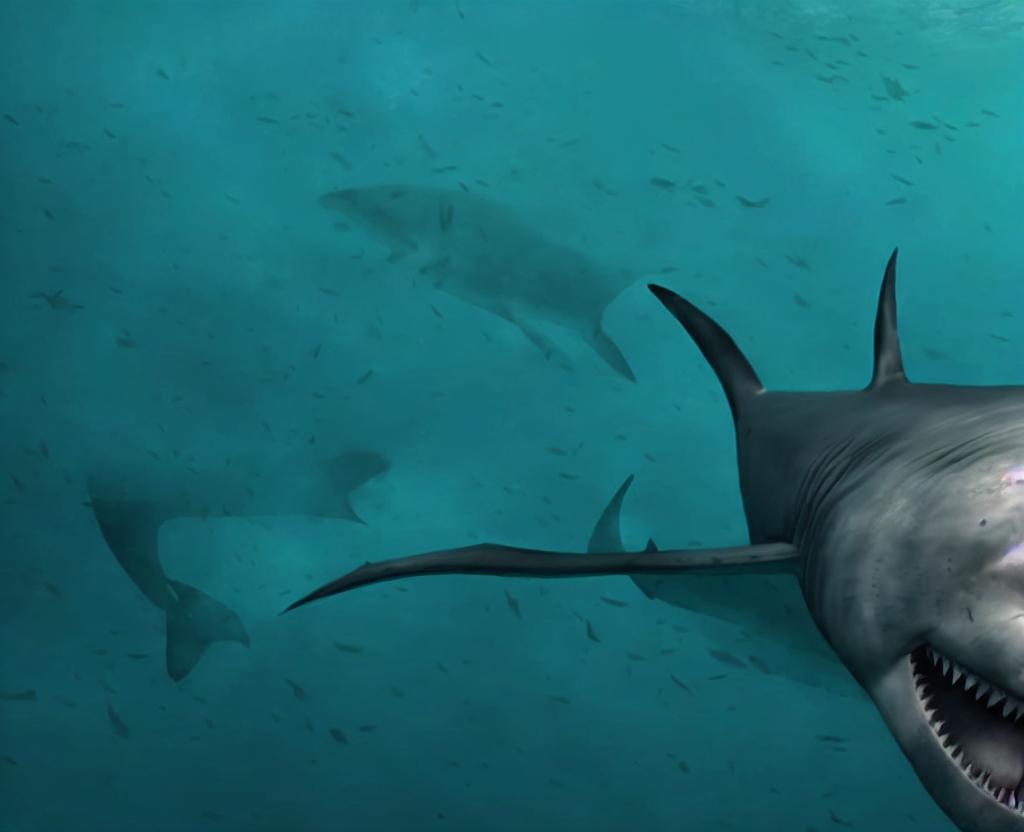
National Megalodon Day
National Megalodon Day, on the 15th of June, teaches us about the most massive shark that has ever lived!
#nationalmegalodonday
During the Cenozoic Period, Megalodon swam the Earth's oceans for 20 million years. Their mouths were from 8 to 11 feet wide and were packed with rows of sharp teeth. Their prey had no chance of being bitten by over 40,000 pounds per square inch, a maximum weight of over 60 tons, and serrated teeth measuring near 7 inches.
Megalodon ruled that they were ruled out of their watery habitats after eating a variety of aquatic vertebrates, including large marine vertebrates. Some of the finest and well-preserved examples of fossilized Megalodon teeth in the country are found in phosphate deposits mined near Aurora, North Carolina (also known as Lee Creek). Several other Miocene and Pliocene aged fossils, including the whales Megalodon hunted, are also discovered alongside the Megalodon's majestic teeth...
Megalodon's extinction caused by megalodon's extinction, according to megalodon's extinction
The Megalodon grew to huge sizes and ruled the oceans at the end of their era.. Food was obviously plentiful. Probably plenty. However, survival may have gotten more intense as the Ice Age began, but survival may have gotten more fierce. As their prey began to dwindle, their prey began to decline, and other animals, such as carnivorous whales, put up a good fight. It's also possible that the rise of its rival, the modern-day Great White Shark, was the catalyst for Megalodon's demise. It may have been out-competed by the smaller, faster Great White Shark due to Megalodon's large size.
Amazing things began to happen as a Megalodon disappeared from the fossil record at the end of the Pliocene Epoch (some 3.6 to 2.58 million years ago) and then some amazing things began to happen. Whales and other sea creatures grew larger in the fossil record and modern history. Possibly favorable weather allowed survival long enough to flourish and expand to their larger sizes without the mega predator.
What does all this mean for today's sea life? Will another shark grow to rule the seas? Has the Megalodon's time come and gone, leaving us with only a fossil record to investigate? more, visit National Megalodon Day to celebrate and learn more!
How to celebrate national megalodon day. n.b.o
The Aurora Fossil Museum in Aurora, North Carolina, encourages you to learn more about the "All-Time Alpha of Apex Predators" by visiting fossil and dinosaur museums near you, particularly ones like the Aurora Fossil Museum in Aurora, North Carolina. Learning more includes: Here are some other ways to learn more.
- In the museum's Fossil Park, visit the Aurora Fossil Museum and Dig the Past
- If you live in North Carolina, sign up to get the AFM license plate
- Engage with the Aurora Fossil Museum by liking their social media pages
- For more information about the museum and the North Carolina State Fossil Museum in Megalodon, visit the AFM's website (aurorafossilmuseum.org)
- Read books or watch a documentary about the Megalodon
- Learn paleontology and fossil origins
Use #NationalMegalodonDay on social media to post your celebrations.
The national megalodon day is the first in national megalodon day in history
The 15th of June is designated as National Megalodon Day in honor of the day that the Aurora Fossil Museum (AFM) first opened to the public on June 15th, 1978. The 15th of June is also known as National Megalodon Day.
In an engaging way, the Aurora Fossil Museum is a 501(c)(3) nonprofit science museum and education resource center whose mission is to inform the public about paleontology in a vivacious way while still stressing the natural and cultural history of Eastern North Carolina. The AFM educates the public through exhibits, interactive inquiry-based research, outreach campaigns, summer camps, events, field research, and the Aurora Fossil Festival. Many Miocene and Pliocene fossils discovered in the neighboring phosphate mine, including some of the best Megalodon teeth in the world, are on display in the main museum. The Megalodon Shark's fossilized tooth adorns the museum's logo, and it also stands as the AFM's "Flagship Fossil" of the AFM.
Dr. Bruce Worf, a longtime supporter of the AFM, spearheaded the campaign to get the North Carolina Legislature to designate the Aurora Fossil Museum as a North Carolina State Attraction and introduce a state attraction license plate with the AFM logo, a Megalodon shark tooth, as a North Carolina State Attraction. Cynthia Crane, AFM Executive Director Cynthia Crane, with the support of the Aurora Fossil Museum Foundation, Inc. Board of Directors, and Dr. Bruce Worf thought that June 15th would be the perfect day to commemorate the Aurora Fossil Museum with the designation of National Megalodon Day.






